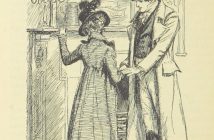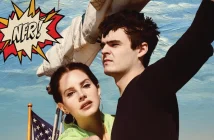One of the major problems with black characters in popular culture – in TV shows, video games, and books – is that black characters are rarely, if ever, the main focus of anything produced, certainly not anything that has achieved serious popularity. They are treated with a kind of strange callousness, thrown in seemingly as an afterthought. They end up being poorly written, and the characters are then seen as disposable, used as cannon fodder, or else written out entirely.
In The Walking Dead, easily one of the most popular shows on air at the moment, there is a worrying tendency to verge on a kind of ‘quota’ approach to minority characters. When a character death is required by the show, the core cast is never (or almost never) affected. Instead it’s often the minor characters (read: black characters) who get eaten, shot, or otherwise killed. After bumping off what amounts to their “spare” black character, the show replaces them with another black figure. This has happened throughout the show’s five seasons, and has multiple implications and effects: that, in the showrunners’ eyes, the audience don’t care enough about the black characters, so they can be killed for the necessary violent-danger factor required by a post-apocalyptic zombie-based TV show; that in repeatedly killing off this cycle of black characters, the audience is prevented from ever developing an attachment to them of the same strength that they have with the core cast; and that it seems apparent that the showrunners’ are in fact aiming for some quota of minority characters.
There are, however, two compelling examples where black characters have been placed firmly and unashamedly at the front, and both have seen critical and commercial success in huge amounts.
The first is the Grand Theft Auto series. Not only were they one of the first games to make the main character black (CJ in San Andreas), but Franklin, one of the three main characters in the latest instalment, GTA V, is a fantastically written character, who is not only immersed in black culture, but is separate from it too. GTA is probably the most successful game series ever made, critically and commercially, with GTA V grossing a ridiculous $1 billion within its first few days of release. It shows that, actually, people don’t care what race their main character is, something that was perhaps more readily understood by Rockstar, which as a British-founded company lacks the almost crippling stigma towards race-relations that dominates American society.
As well as in gaming, success can be found with major black characters in TV, as with Netflix’s Orange is the New Black, a show which consistently pushes the boundaries of what constitutes an empathetic, compelling character. Not only does the show split its focus equally (or as close as possible) between characters of all ethnicities, it manages to escape the trap of writing the kind of cookie-cutter minority characters so often found elsewhere: Poussey, Crazy-Eyes, and Taystee, though all black, are as different from one another as, you know, actual black people are different from one another. As with Grand Theft Auto, Orange is the New Black is different from its competitors not just in what it contains, but in how it’s made, or who by. Where GTA has British developers, OITNB is made by Netflix, a company that hasn’t so much turned the TV industry upside-down, as it has set the whole thing on fire and started again from scratch.
What’s needed now is for these outliers to become prevalent, to become the norm. All it will take is a little bit of bravery on the part of those who make these things. Bravery, and a trust in the audience; we’ve accepted main characters who are black, who are female, who are LGBT, accepted them and enjoyed them, and we’re ready for more.




